The focus for Earth Day 2019 (April 22) is to protect our species, a focus that aims to educate and raise awareness of the unprecedented spike in endangered species due to human activity. Deforestation destroys habitats of plant and animal species, sunscreen washes into oceans killing the coral reef, and pesticides pose major health risks to a wide range of species including humans–just to name a few. One major issue we’re especially passionate about is plastic pollution.
Plastic can take 500 years or more to photo-degrade, becoming micro-plastics that continue to pollute the Earth and releasing toxic chemicals into the Earth. Plastic pollution is littering the oceans and shores, causing the deaths of wildlife that ingest plastic materials inadvertently. At current rates, plastic is expected to outweigh all the fish in the sea by 2050.
We decided to do our own #PlasticFreeChallenge in light of Earth Day by attempting to going plastic-free for the past few weeks and boy, was it difficult. Through this plastic-free challenge, we’ve come to realize exactly how much waste we produce on a daily basis.
At the start of this challenge, we really didn’t know what we’d be getting into. Seriously. Everyone in the office expressed how simple it would be to not use plastic cutlery we originally had in our break room and use silverware instead, or how we wouldn’t use plastic straws anymore and used the stainless steel ones we all had tucked away in our desks. Although those are great ways to reduce our environmental footprint, we had no idea how much more there is out there–in packaging, in our kitchens at home, in our grocery shopping, in our bathrooms–yikes! Plastic is EVERYWHERE.

Perhaps we did know how much there was or could acknowledge the amount of plastic waste we produce, but we were blinded by the convenience or so used to seeing and using certain items that we just didn’t notice it anymore. Everyone in the office was asked to log their plastic waste in a journal. We found that through logging each piece of plastic waste, we became more conscious of our decisions to buy certain things or to refuse others.
#1 Plastic Cups and Plastic Bottles
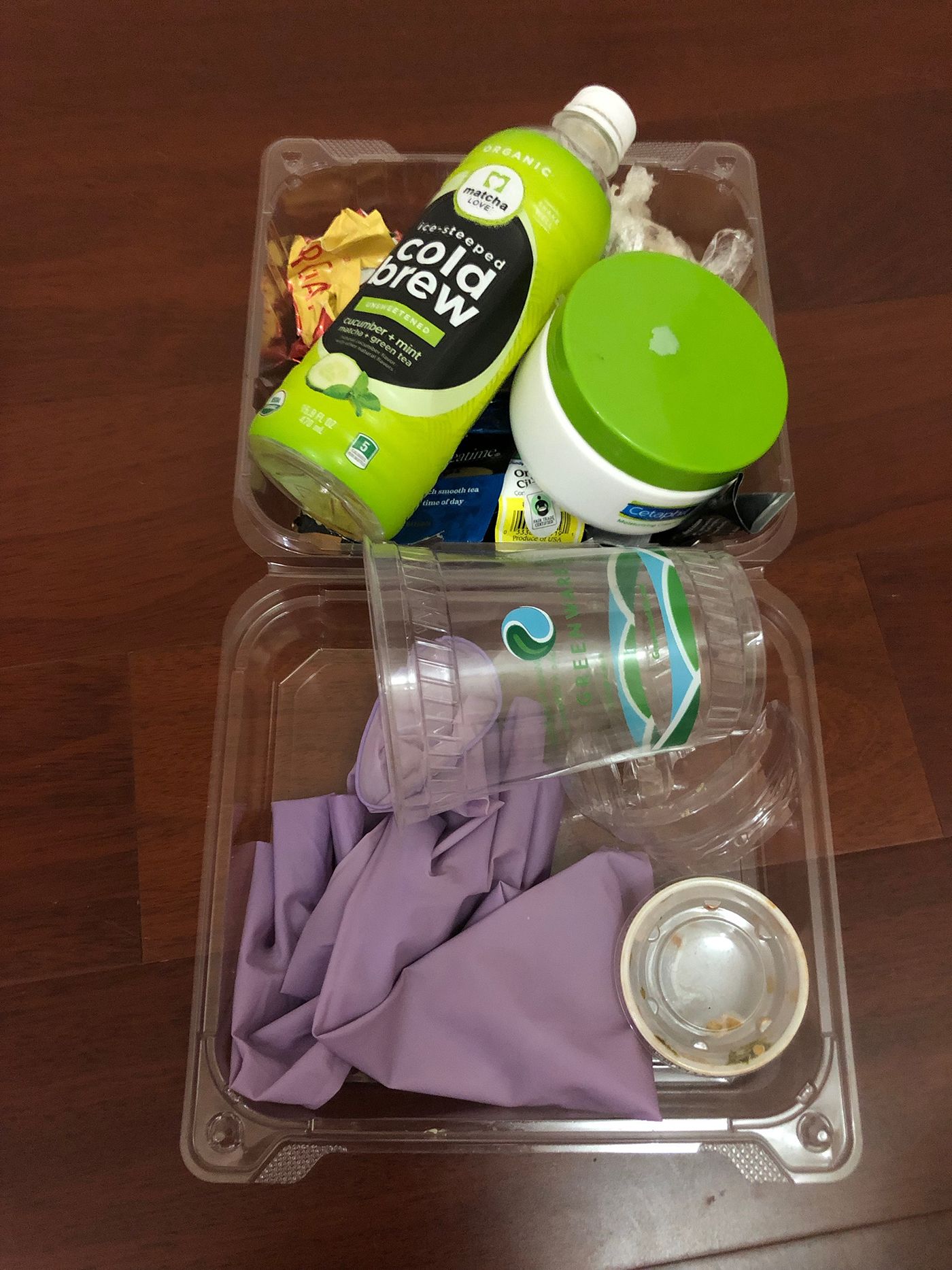
This was an obvious one for us. Yes, we actually do use our LARQ Bottles everywhere we go–they truly don’t leave our side. But, we’re constantly seeing plastic cups and plastic water bottles at parties and social events, or even when traveling.
Most of us have our own mugs here, and the office has some mugs, plates, and bowls for people who don’t. They’re actually great conversation starters and allow us to express ourselves!
However, I’ve personally had an experience with helping to plan a party for my sister’s birthday and the issue of hydration came about. The simple answer was to buy a case of mini water bottles. My response–please, no. The solution wasn’t the easiest, but it definitely reduced plastic bottle and cup waste. We purchased two large water dispensers (yes, these were plastic, but we figured potentially less than the 100 pack of plastic water bottles we would’ve purchased instead) and we got paper cups instead of plastic. It was actually a relief to not have half-consumed bottles of water lying around everywhere unclaimed, and not having to fish out empty plastic water bottles from the trash to put into recycling. It actually made cleanup EASIER and more green.
#2 Plastic Cutlery
As mentioned before, plastic cutlery was one of the easier ways to minimize our plastic waste. We used silverware from home, and some of us ordered nifty silverware for travel on Amazon. It even became more acceptable to lend utensils to our peers if they forgot theirs.
#3 Drinks to-go
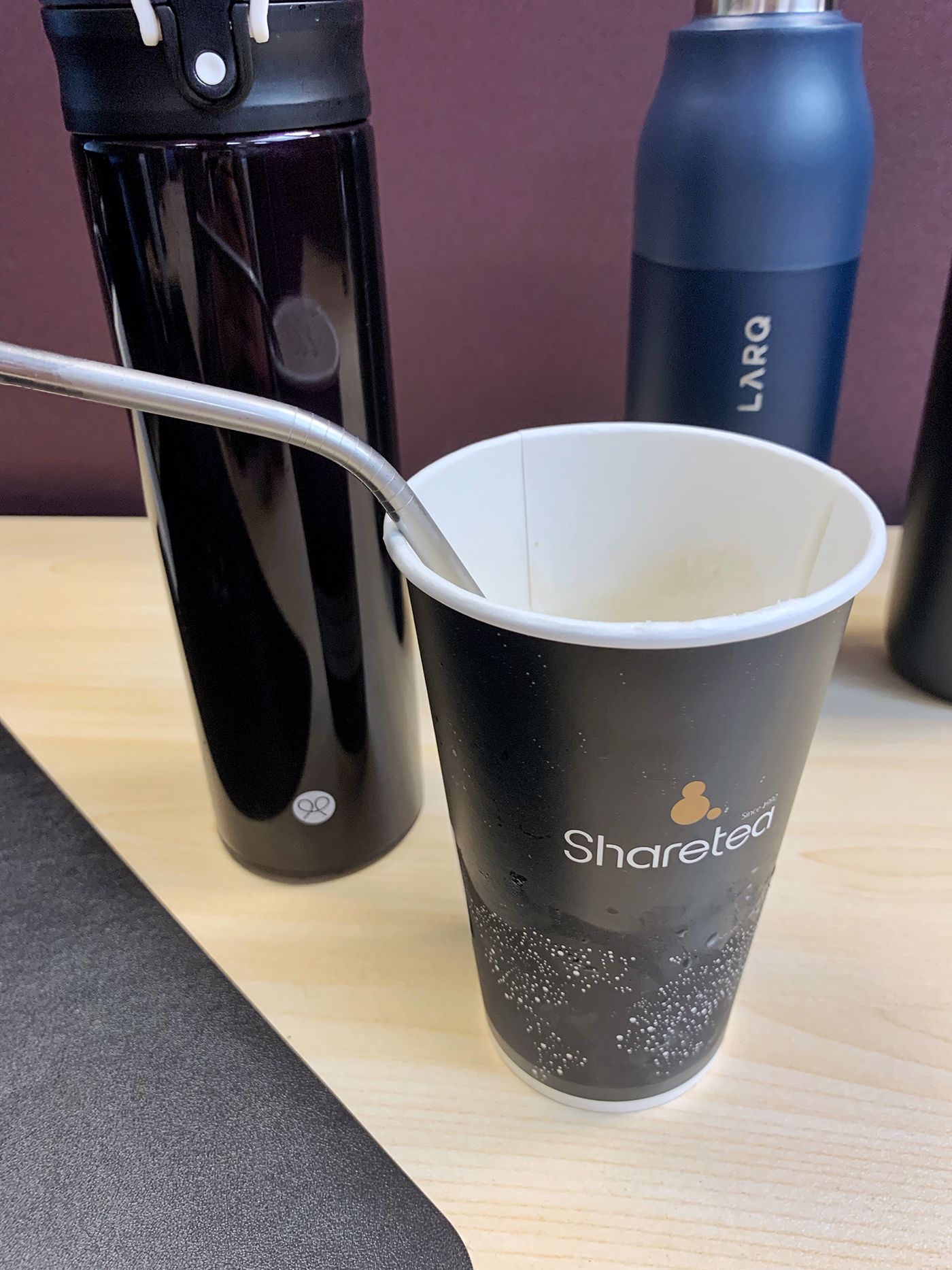
Remembering to bring straws or reusable tumblers was difficult but we got the hang of it. We did get some weird looks from baristas but we took the opportunity to tell them about the plastic-free challenge and most people were understanding and accommodating! Some even had paper cups for their hot drinks that you can request instead of using plastic cups.
#4 Take-out
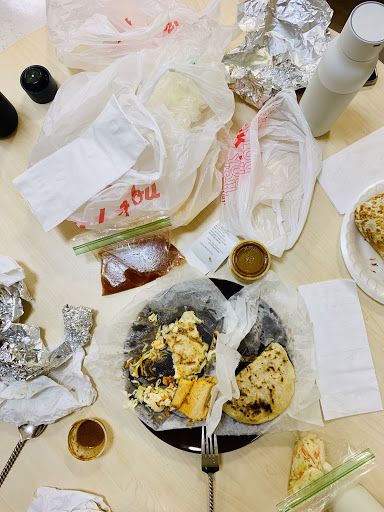
When it comes to food, take out can sometimes be more convenient than dining it, but at what cost? A few of us went to a Pupuseria near the office to get lunch one day and they didn’t have any seating, so we had to get take out. The amount of waste we received that day was unsightly. If we weren’t doing this challenge, it wouldn’t phase us because it’s so normal, but having to document this, we were frankly embarrassed. We even refused plastic cutlery here.
Here’s what our Customer Success Manager, Adria had to say: “Being out of town/ having a family emergency/going and eating out made avoiding plastic extremely difficult. Going for the healthy choice (salad) meant it was coming in a plastic container, getting Mexican meant we had plastic salsa containers (but their tacos came in compostable boxes) and Indian came in plastic containers. Some of these containers are reusable, but there comes a point where the balance between storing them and actually using them hits a breaking point.”
We even noticed that ordering certain foods, we’d naturally get more plastic–anything that has a sauce accompaniment would come in a plastic sauce container, all wrapped in a giant plastic bag, with plastic utensils thrown in, sometimes in excess. The solution? Try to dine in whenever possible.
#5 Food packaging

Part of the struggle here was we all love snacking so much, and most packaged food is riddled with plastic packaging, which by the way, you can’t even recycle. Yvonne, our Senior Marketing Manager, describes her personal experience with this, “I needed to go to the grocery store because I make my dog’s food from scratch so had to pick up a few items. I went into Trader Joe’s and realized that almost EVERYTHING is in plastic even when it doesn’t even need to be. I did pick up my favorite snack (butter waffle cookies) then realized the inside packaging was plastic! I headed my way to Safeway in the produce section which, thankfully, had packaging-free veggies that I could pick up. This one grocery trip really made me realize that we are surrounded by plastic and made me much more conscious about where I should go buy my food.”

To further illustrate the struggle of refraining from snacking, Adria chimes in again: “Tough moments were not eating chips at work, or forgetting about the challenge when eating things like a fortune cookie — the wrapper was already open by the time I even thought about it!” Now, I can’t really think of a real solution for this besides not snacking, but that probably is the solution here–or at least in moderation. It’s probably better for your health anyway?
This wasn’t just snack packaging either–but some drinks. K-cups and tea wrappers all were used in the office which compelled a lot of us to switch to loose-leaf and purchase stainless steel tea diffusers. Adria chimed in on this matter as well, “I didn’t realize how much my tea I drank every day, and how many wrappers I was throwing away that would end up in the landfill. Switching to loose leaf tea was something that I had been wanting to do, and this gave me the push to do it. I also didn’t realize that they had it at my local co-op, so it was a much easier transition than expected.”
Through researching how to recycle K-cups, we found out that you can separate each component of the K-cup to be recycled. Some of us actually have Nespresso machines at home, which are made from aluminum (no plastic) that can be recycled at a Nespresso boutique or you can order a free recycling bag and drop it off at UPS.
#6 Beauty products
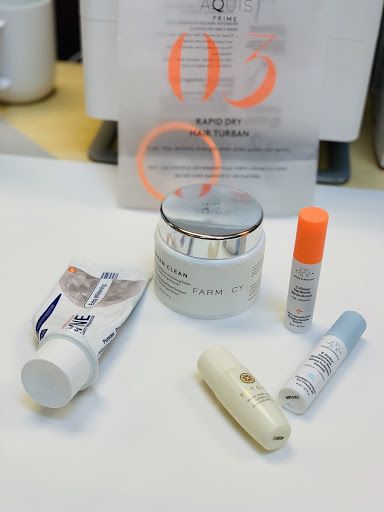
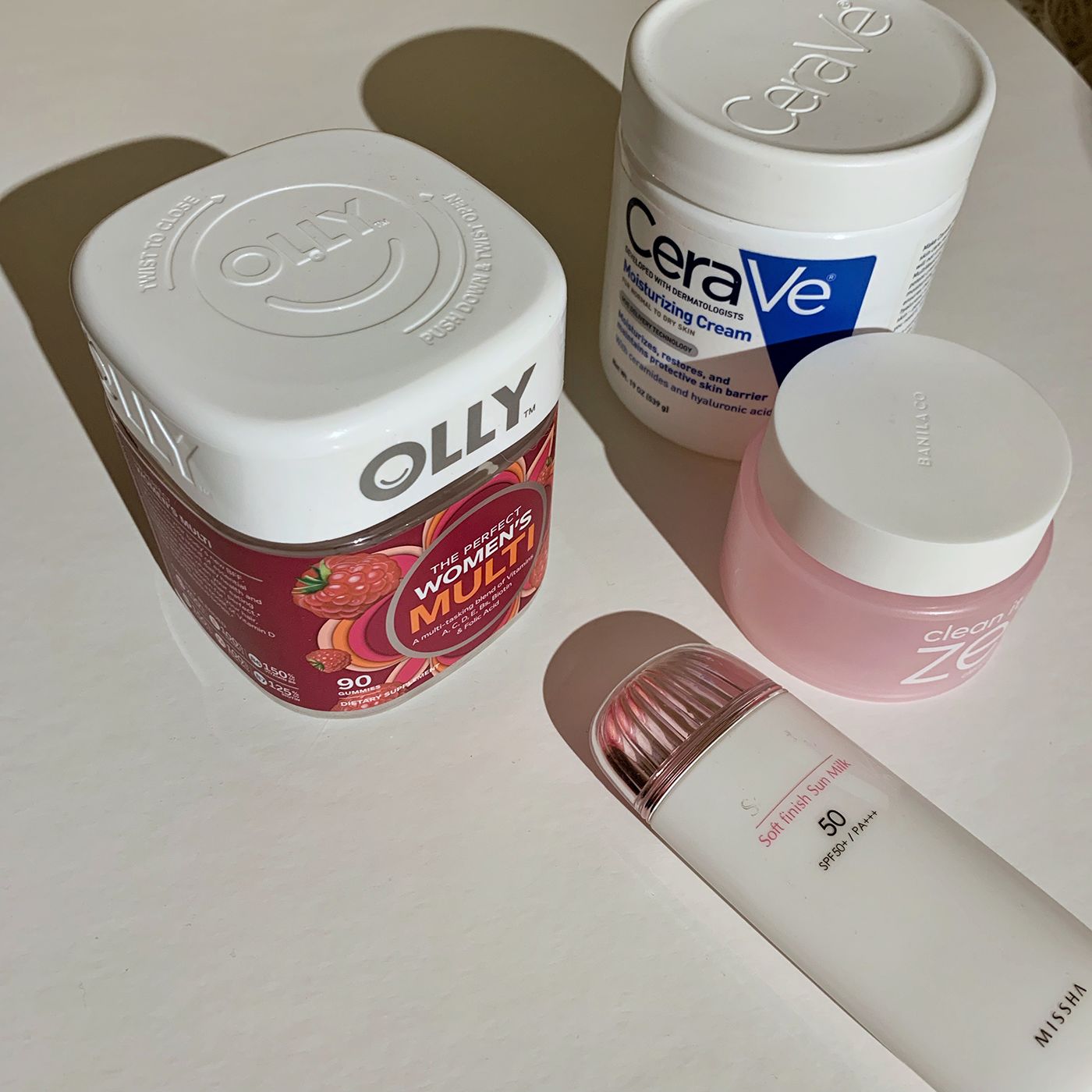
Another one that seems unavoidable to some is beauty or personal care products. Beauty and personal care packaging are most commonly made of plastic that requires special care to recycle or isn’t recyclable at all. Yvonne reflected on the matter, “I finished one of my cleansers and was about to recycle it but – guess what? It’s plastic. I took a look at my vanity and bathroom and realized that I had tons of travel size products which are all in plastic. I plan on refilling them but some are one-use which makes it harder to refill…I’m planning on purchasing products in glass packaging which is easier to recycle and re-use.”
Becoming more aware during this challenge made us question alternatives or solutions for recycling products like these. Through quick Google searches, we were able to find out that companies like L’occitane have recycling programs for beauty packaging (from any brand!) and some other brands like MAC offer recycling programs for their own packaging.
#7 Shipping packaging
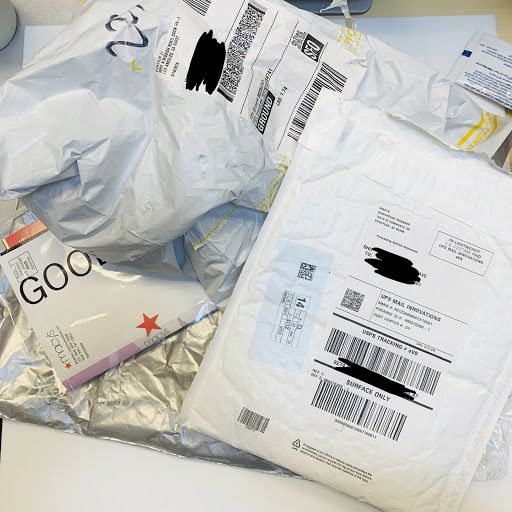
Ordering things online at our convenience has become so normal that we rarely think about the environmental impact. As we realized after a couple of online orders that the bubble wrap lined paper envelopes are not recyclable, we tried to combine our Amazon orders to reduce waste or wait until we had a few things in the cart instead of shipping one thing at a time to reduce waste.
#8 Food storage
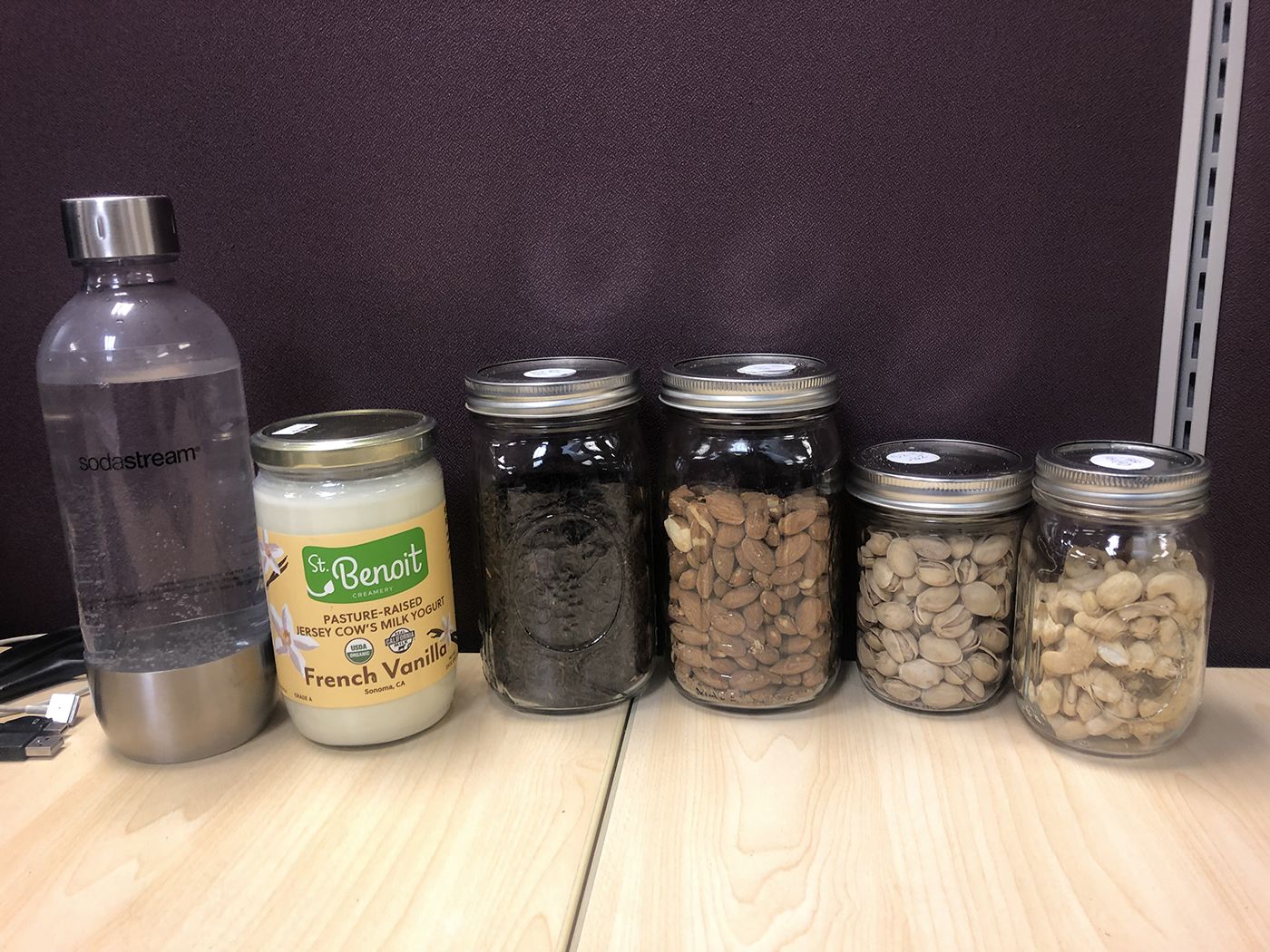
Learning to avoid using plastic cling wrap or zip bags for snacks and loose food items was a big one for this challenge, especially at home. The remedy for this, although not as convenient, was to use reusable food containers, Stasher bags, mason jars, or purchasing products in glass jars when available. If your local grocery stores have a bulk section, bring your containers with you to fill up instead of using a plastic bag. We like to bring an expo marker to write the code and date of purchase on the lids to keep everything extra organized.
The challenge helped us become more conscious of the plastic in our lives. Truly, once you start seeing it, you won’t be able to unsee it. Now, we invite you to do your own plastic-free challenge. Just remember, it’s not about doing anything perfectly–in fact, we sure as hell didn’t! But small changes can be the push you need to live a more sustainable plastic-free lifestyle.
Depending on your lifestyle, you might want to pick up a few things to help you along on your journey. Here’s a checklist of products we mentioned (and some we didn’t) that you might want to invest in to get you on your way! Keep in mind, you don’t need everything on this list. If you see plastic items in your daily life that can be swapped with an item or two below, you probably should get it; if not, don’t! It’s that simple.
Build your own eco-kit:
- Reusable water bottle
- Tumbler
- Stainless steel straw
- Reusable cutlery
- Silicone storage bags
- Mason Jars
- Reusable food wraps
- Glass food containers
- Reusable shopping bag
Find out more about ways to live a more sustainable lifestyle.
Whether it’s in observance of Earth Day or a change you want to make to help make the world a better place, we invite you to do your own #PlasticFreeChallenge and tag us in your Stories on Instagram so we can cheer you on! Before you get started check out EarthDay.org’s Plastic Pollution Calculator to help you gauge how much plastic you’re currently using and how much you can commit to cutting out for the rest of the year.
